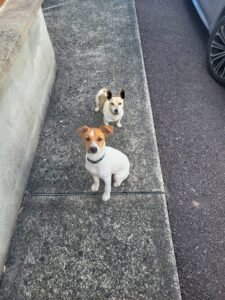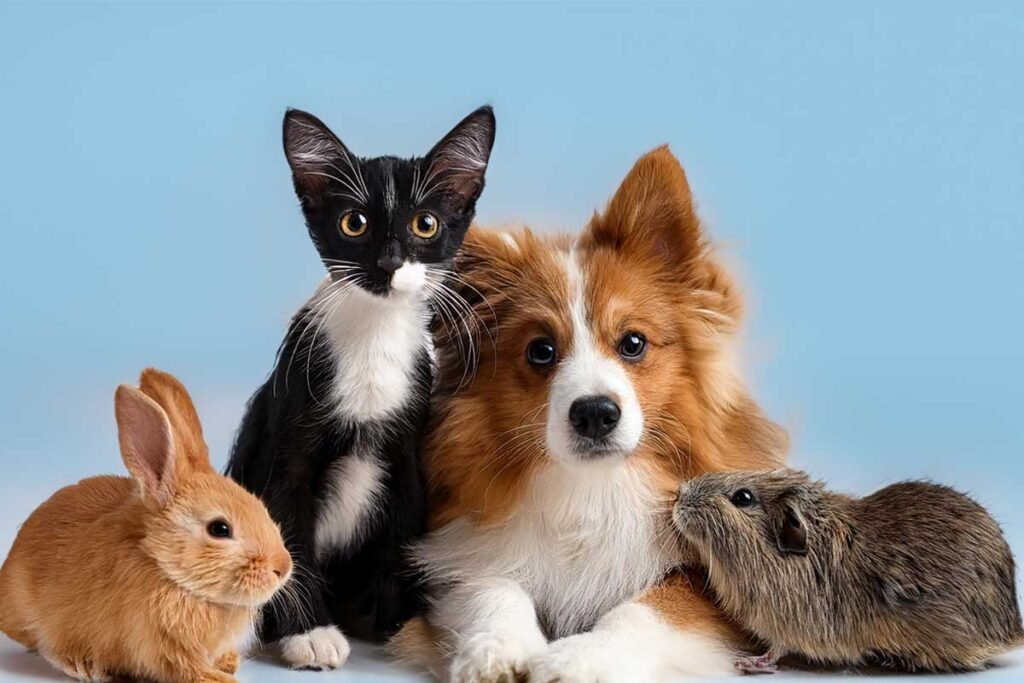Have you ever dreamed of immortalising your furry friend in a beautiful hand-painted portrait? We can make your dream come true! The quality of the photo you provide is an important factor in the final result. Let’s learn how to take the perfect photo or choose the best one from your collection!
Quality matters, But don’t stress!
Before we dive into the tips, let’s address an important point:
The better the quality of your photos, the more detail can be uncluded in the painting. For small to medium-sized paintings, social media photos or screenshots may be enough. For larger portraits however, high-quality images are needed.
So while we’ll focus on getting the best possible photos, remember that you don’t always need professional-quality images, especially for smaller portraits. However, if you’re going for a larger, more detailed piece, taking or selecting high-quality photos will pay off in the final artwork.
How to quickly assess photos that you already have
As a general rule, your photo is good enough to use if you can see the following:
Eyes
- Colours are visible
- Details are noticeable
- Eye shape is clear
Fur
- Hair growth direction is visible
- Texture differences are visible (e.g., fluffy vs. sleek)
- Any coat patterns or markings are visible
Angle:
The photo should be taken close to or at the animal’s eye level. This is crucial to avoid having a deformed silhouette or face. Shooting from the animal’s perspective helps create a more natural, life-like portrait by capturing their features at the proper angle.
Overall clarity:
- The image is in focus
- There’s sufficient lighting
- The pet’s unique characteristics are captured
If your photo meets these criteria, it should provide enough detail to create an accurate and vibrant portrait of your pet.
However, these factors make a photo good enough but maybe not the perfect one. Keep reading, as a good photo is not just about its sharpness. You may be able to take more interesting or flattering photos with the tips that follow.
If your photos do not meet these criteria and you’re unable to provide higher quality images (for example, in the case of a deceased pet), please do not worry! Scroll down to the end of this article where I explain how you can still get your beautiful portrait.
Capturing the perfect shot
If you don’t have any photos you like for your portrait, this is your chance to get out your camera or phone and capture some amazing memories! Our pets can be a bit tricky to deal with, even under the best of circumstances, but don’t worry, below are tips and tricks to make the process easier and get great results!
The basics: 4 rules to success
1. Get up close
Don’t try to capture the whole scene. Fill the frame with your furry friend for the most impactful and detailed shots. This helps highlight their unique features and personality. The closer you can get, the better.
| AVOID ❌ | DO ✅ |
|---|---|
  |
  |
| Photographing the animal from far away | Get within 1-2 metres maximum |
| Using zoom to compensate for distance | Capture the whole body |
| Taking a photo of the entire scene | Also take face close-ups |
Kneel down to your pet’s height as this angle is far more flattering than shooting from above.
| AVOID ❌ | DO ✅ |
|---|---|
  |
 |
| Standing when the animal is on the ground | Get at eye level |
| Photographing your pet from your height | Crouch or lie down if necessary |
| Forcing the animal to lift its head | Keep the camera at face level |
Keeping your camera steady is key to sharp, clear images – especially when photographing active subjects like animals. Stabilise your arms by tucking them against your body to create a stable shooting platform. Wait until your subject is calm before taking the shot. And be sure to utilise your camera’s autofocus capabilities to lock onto your subject. With these simple techniques, you can consistently capture blur-free photos.
| AVOID ❌ | DO ✅ |
|---|---|
 |
 |
| Moving during the shot | Stabilise your arms against your body |
| Photographing a moving animal | Wait until the animal is calm |
| Using too slow a shutter speed | Use your camera’s autofocus |
4. The importance of light
Whenever possible, opt for outdoor shoots with your pet. Natural light enhances their coat and creates a softer, more flattering look. If shooting indoors, be sure to position your pet facing a window to take advantage of the natural light. Avoid using flash, as it can be harsh and unflattering. By harnessing natural light, whether outdoors or near a window, you can capture more vibrant, flattering portraits of your furry friend.
| AVOID ❌ | DO ✅ |
|---|---|
  |
 |
| Taking photos in a dark room | Choose a well-lit location |
| Using flash | Position the animal facing/45° to the ligh |
| Taking photos with backlighting | Photograph near a window |
Capturing your pet’s essence
Exercise Patience:
Take your time, let your pet get comfortable during the photo session so that they showcase their natural behaviour and expressions.
Use Familiar Objects
Include your pet’s favourite toys or treats in photos to show their true personality. These items get your pet’s attention and show their true character.
Employ Burst Mode
Using your camera’s rapid-shot or burst mode function increases your chances of capturing those split-second, perfect expressions. This technique is particularly useful for active pets or when trying to photograph specific behaviours, as it allows you to take multiple shots in quick succession and choose the best one later.
Species-specific strategies
Different pets need different approaches when being photographed. This section looks at different techniques for photographing different animals. These strategies capture each pet’s personality and essence, ensuring you get the perfect shots for painted portraits. Knowing how each species behaves helps you capture their best in photos. By working with the specific behaviours of each species, you’ll be able to bring out their best in your photographs.
For dogs
Make intriguing noises
High-pitched sounds attract and engage dogs. These sounds can make dogs look interested or excited, which is perfect for dynamic portraits.
Chat with them during the shoot:
Talking to your dog during photos keeps them engaged and relaxed. Your familiar voice can make your dog look attentive, relaxed or happy.
Aim for the adorable head tilt:
The head tilt is a cute dog behaviour that makes for great photos. Sounds or words can trigger this adorable reaction, creating a moment of curiosity that translates beautifully to portraits.
For cats
Prepare your setup in advance to accommodate their quick movements:
Cats move quickly and unpredictably, so it’s important to be prepared. Having your camera settings and environment ready allows you to capture those fleeting moments of feline grace and personality
Schedule sessions post-meal or after naps for a calmer subject
For better results, time your photoshoot when your cat is naturally more relaxed, such as after meals or naps. It will make for better photos.
Enlist assistance for distraction with toys or treats
An assistant can help you take great photos. Using toys or treats, they can direct your cat’s attention, creating opportunities for alert, engaging expressions while you focus on getting the perfect shot.
Special considerations
Sometimes, the photos we have of our pets are the only ones we’ll ever get, for various reasons. Let’s explore how to create a beautiful portrait from these images, whatever their quality, to capture your pet’s spirit and your cherished memories.
MEMORIAL PET PORTRAITS
When making a memorial portrait from old photos, don’t worry if they’re not perfect. Every picture tells part of your pet’s story. Sharing multiple photos lets the artist sense your pet’s true spirit. This results in a heartfelt, detailed portrait that celebrates your pet’s life and the joy they brought you.
MULTI-PET PORTRAITS
It can be a real challenge to take good photos of several pets together! Taking or choosing the best photos possible for each pet separately allow the artist to capture their unique features and personality. Selected photos can then be combined into a group portrait that shows off each pet at their best.
Seeking additional guidance
If you’re unsure about your photos, please don’t hesitate to reach out. I am here to assist you throughout the process. I will make sure we have the ideal reference for your custom pet watercolour portrait.
